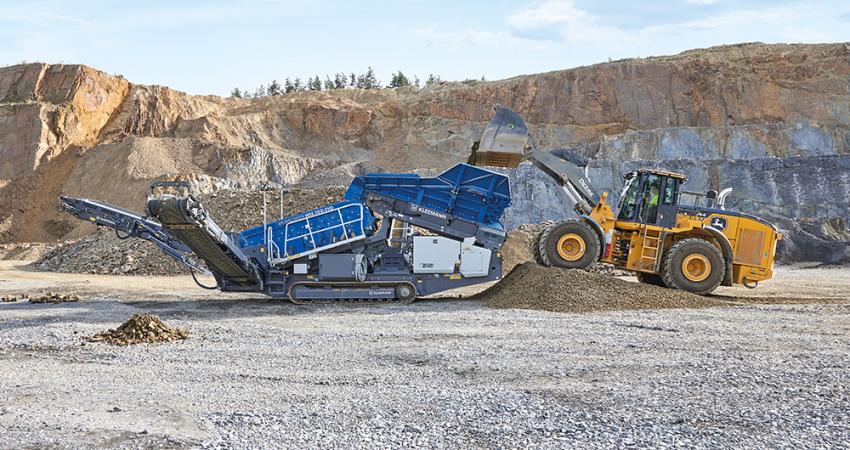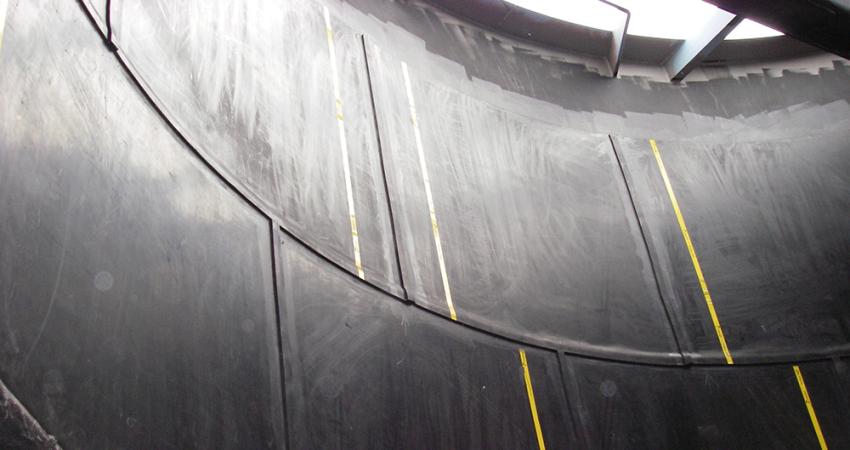
Decarbonising the construction industry has become a key focus for many countries, including Norway, in the quest to achieve the climate goals established in the Paris Agreement (2015). The national government has approved stringent regulations to reduce emissions and limit noise levels in construction sites, particularly in Oslo, the capital city.
Innovative solutions are being sought to enable emission-free operations and, in that context, Atlas Copco's ZBC 250-575 energy storage system has been delivering the necessary energy to reline 2,400 meters of pipeline at a residential neighbourhood in Kruttverkveien, in the greater Oslo area.
There needed to be more than the power grid available on site to cover the load profile of the work site, which comprises the daily use of two electric excavators, among other machinery. To make up for that deficit and comply with environmental regulations, instead of relying on more traditional diesel-driven alternatives, a battery-based energy storage system manages the energy input provided by the grid and a hydrogen fuel cell, ensuring the load demand is covered.
Leading the decarbonisation of the construction industry
The construction sector alone is responsible for over 10% of global greenhouse gas emissions. When considering CO2 emissions from energy use, the industry accounts for a staggering 38% of global emissions. In Norway, the goal is to lead the world in decarbonising the construction industry. While construction in Oslo accounts for 7% of the city's total emissions, it still significantly impacts local air and noise pollution.
To address this, Oslo has set a target for all municipal construction sites to be zero-emission by 2025 and for all construction work, public or private, to be zero-emission by 2030. Six of Norway's largest cities have also committed to the same goals. Thanks to Norway's electricity grid, which is made up of 98% renewable energy, mostly from hydropower, the country is an ideal testing ground for emission-free sites.
While Oslo has taken the lead, it has been quickly followed by Copenhagen and Helsinki, which have also implemented zero-emission construction sites. Although the construction industry has a reputation for being resistant to change, driven more by lowering costs than reducing greenhouse gas emissions, the introduction of next-generation fuel-free solutions is changing the game, transforming the approach to power supply.
Steady power supply to operate electric machines
The capital cost of electric machinery can be a barrier for certain operators; however, the initial investment in equipment can pay off. Not having to pay for fuel, the electricity required to power the equipment has a lower cost, enabling significant savings during operation. In addition, due to their low noise levels, operators can extend the working hours, beginning earlier in the morning and closing later into the night if needed, improving the projects' productivity.
Jan Erik Schanche, Project Manager at STEG Entreprenør, in charge of overseeing the pipe relining project taking place in Kruttverkveien, explains: "Having an energy storage system on-site has allowed us to extend the workday and reduce the working week to just four days. In Norway, you need electric machinery to work in residential areas. It is a must, but we have discovered that it is also the most profitable approach if you have a steady power supply."
Ensuring a reliable supply of power to operate the electric machines can become a crucial issue. At many construction worksites, like the one in Kruttverkveien, the grid available on site is just not enough. To have the required output to cover all the loads at an emission-free worksite, operators need a sustainable and silent solution that boosts grid power and efficiently manages alternative sources of energy.
STEG Entreprenør and Hafslund, one of Norway's largest power generators, decided to include Atlas Copco's ZBC energy storage system to solve the challenge posed by the limited grid on site. "One of our missions is to help develop a smart and fully electrified zero-emission society. We need innovative solutions for storage and energy carriers. Green hydrogen and batteries, as temporary energy storage, are key technologies to implement energy-efficient systems, like the one we have in Kruttverkveien," says Kristin Arnesen, Business Developer at Hafslund.
Energy Storage Systems enable emission-free worksite
Energy Storage Systems provide the infrastructure for the backbone of electrification of the construction industry. Jan Erik Schanche, who manages operations in Kruttverkveien, assures that "Atlas Copco's ZBC energy storage system feeds all the loads on site, making sure the project keeps running without wasting any energy. Having this unit as the heart of the project has optimised energy consumption. These battery-based units have the potential to help the construction industry substantially reduce its energy usage and, therefore, its carbon emissions".
In addition, this modular solution accumulates energy from the grid during the hours that cost is at its lowest, to deliver output in peak hours of energy demand when cost is at its highest. Not only does this bring consumption savings, but it can also reduce the power grid's output, which construction operators contract.
"The ZBC stores the energy coming from the different sources, the power grid and the hydrogen fuel cell. Our ECO Controller (Energy Controller Optimiser) Controller manages and delivers this energy when it's needed, optimising its distribution and making sure that there is always enough power output. It enables peak shaving with the power grid, flattening the load profile, covers low loads, and efficiently manages peak hours of energy demand." explains Jon-Andreas Ellefsen, Sales Manager at Atlas Copco.
Boosting the charging rate
In addition to the ZBC 250-575, STEG Entreprenør also employs Atlas Copco's new fast charger, the Z Charger, to feed the two biggest loads on site - the electric excavators taking care of the pipe relining. "The Z Charger boosts the charging rate by increasing the voltage, so the electric machinery charges quickly. Meanwhile, the energy storage system's ECO Controller makes sure there is enough energy to cover these peaks in the demand when it's time to recharge," states Jon-Andreas Ellefsen.
Making this innovative fast charger part of the solution has increased site productivity, safeguarding the end customer's operational goals and deadlines. The Z Charger, rated at 160kW, can charge electric machinery and vehicles seven times faster than an ordinary wall box and 42 times faster than a regular wall charger.
Energy savings and business impact
Although there are quite a few applications for Energy Storage Systems, Atlas Copco's Lithium-ion range is ideally suited for the construction industry. The models are light and compact, taking up only 10 to 20 square feet, and can work with renewable energy sources, like solar or wind. Depending on the demand, they can supply power for 12 hours and take only 1.5 hours to recharge. And in addition to enabling end users to comply with environmental regulations, they offer significant business advantages that translate into a low total cost of ownership.

"Compared to a more traditional worksite, this project is way more sustainable. We are not only eliminating fuel consumption and emissions; having an Atlas Copco energy storage system on-site gives us major energy and economic savings from day one," says Jan Erik Schanche, Project Manager at STEG Entreprenør.
In total, by using Atlas Copco's ZBC energy storage system to charge the electric machinery working on site, the ten-month pipe relining project in Kruttverkveien has saved 15,000 litres of fuel and the equivalent of 40 tons of CO2, compared to the use of regular machinery. That's equivalent to the carbon dioxide absorbed by 1,520 trees in one year.
The construction site of tomorrow will consume much less energy than construction sites of the past. Diesel consumption and the associated air pollution will drop significantly as construction companies turn to energy storage solutions. The Scandinavian countries are leading the industry's transformation, and renewable energies and practical, cutting-edge solutions like energy storage systems already play a crucial role in this new reality.








